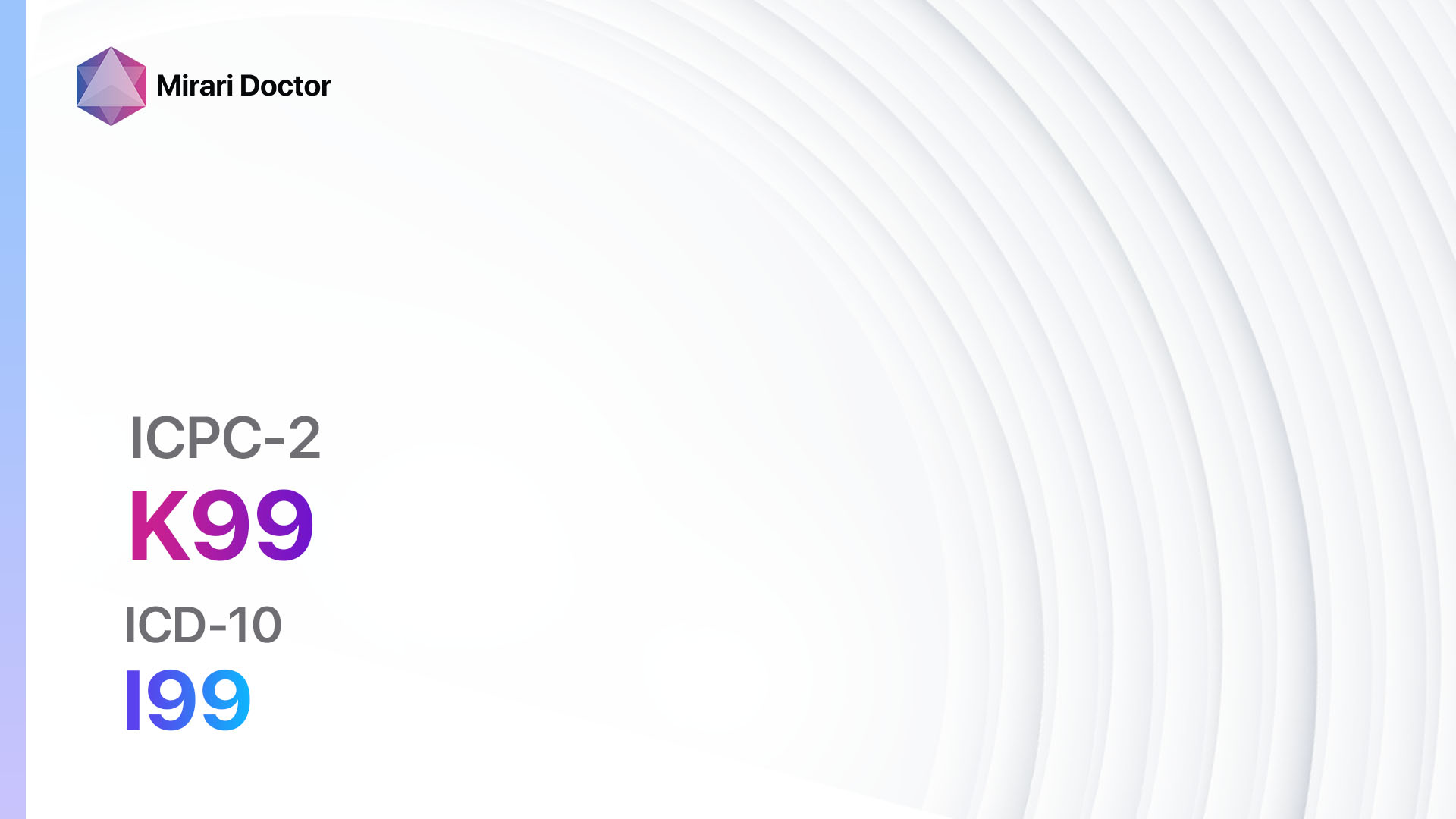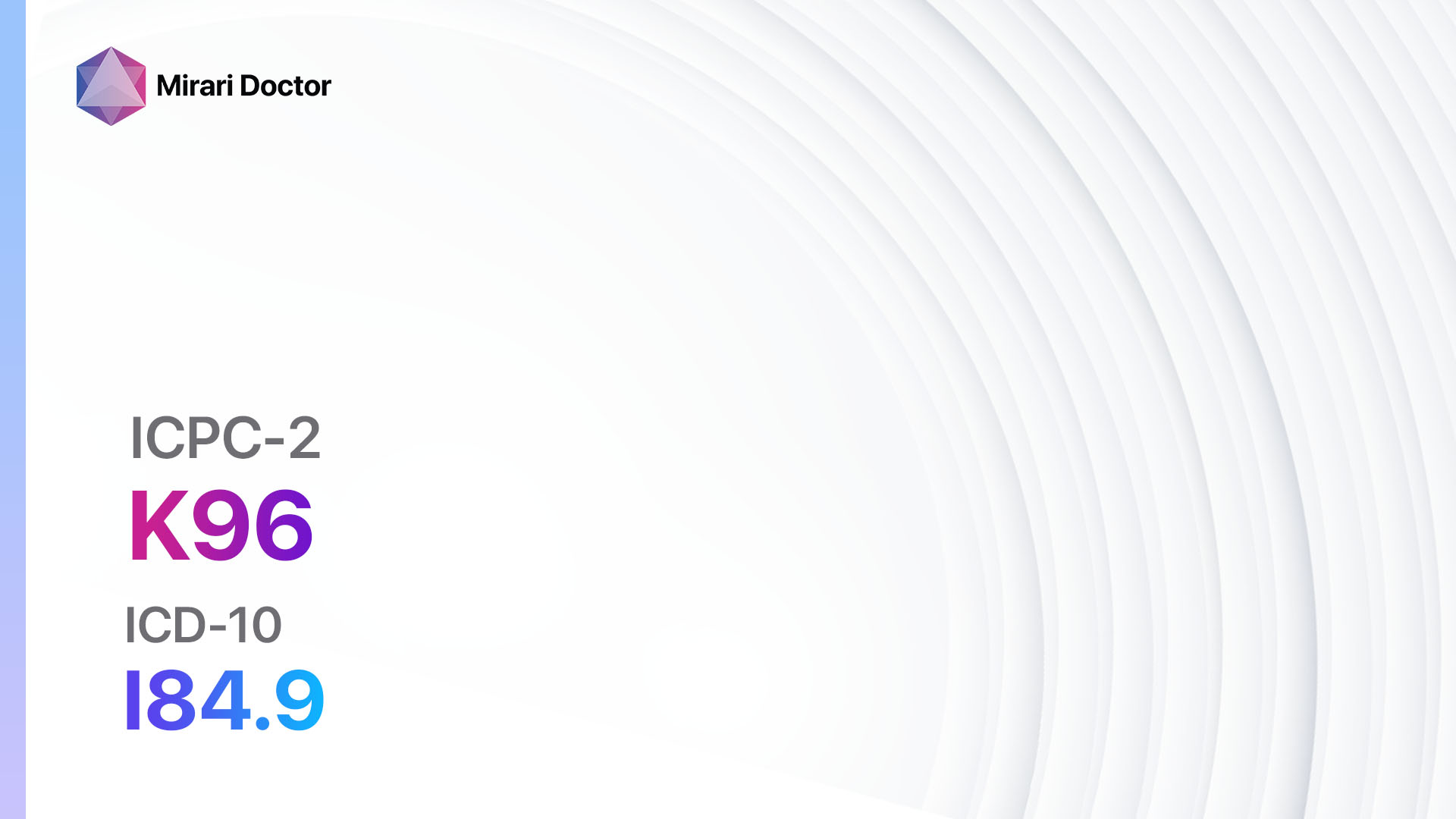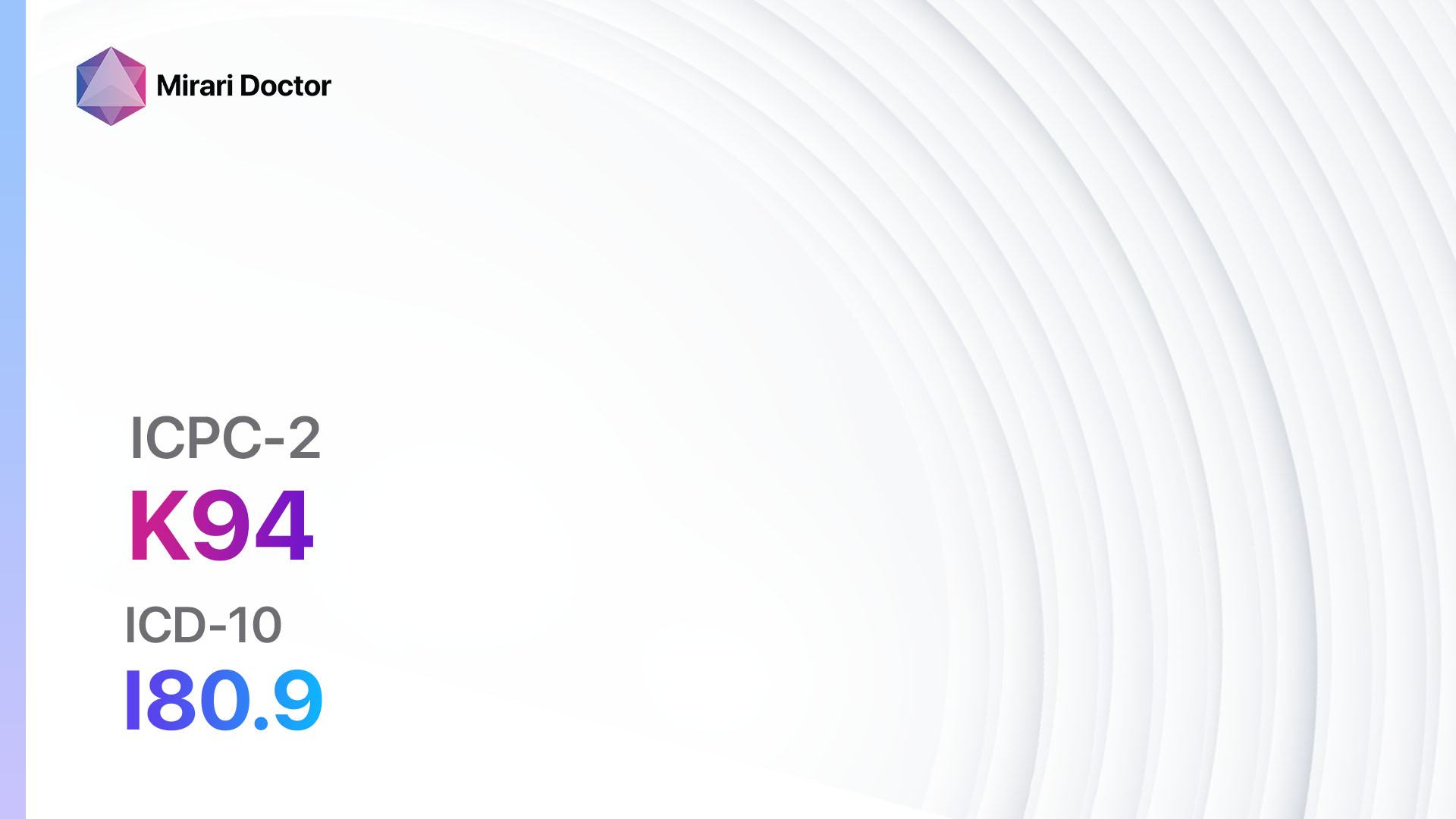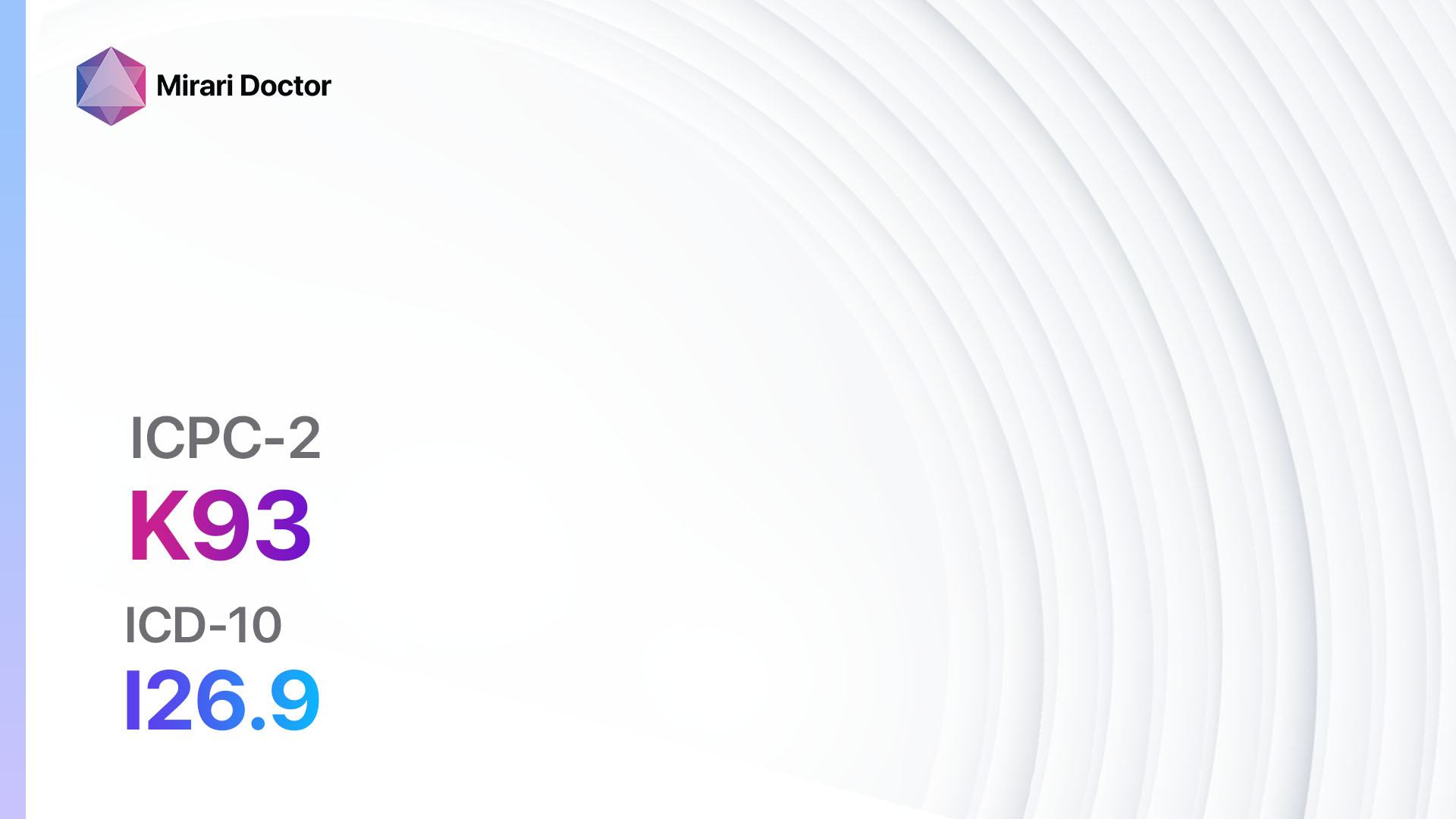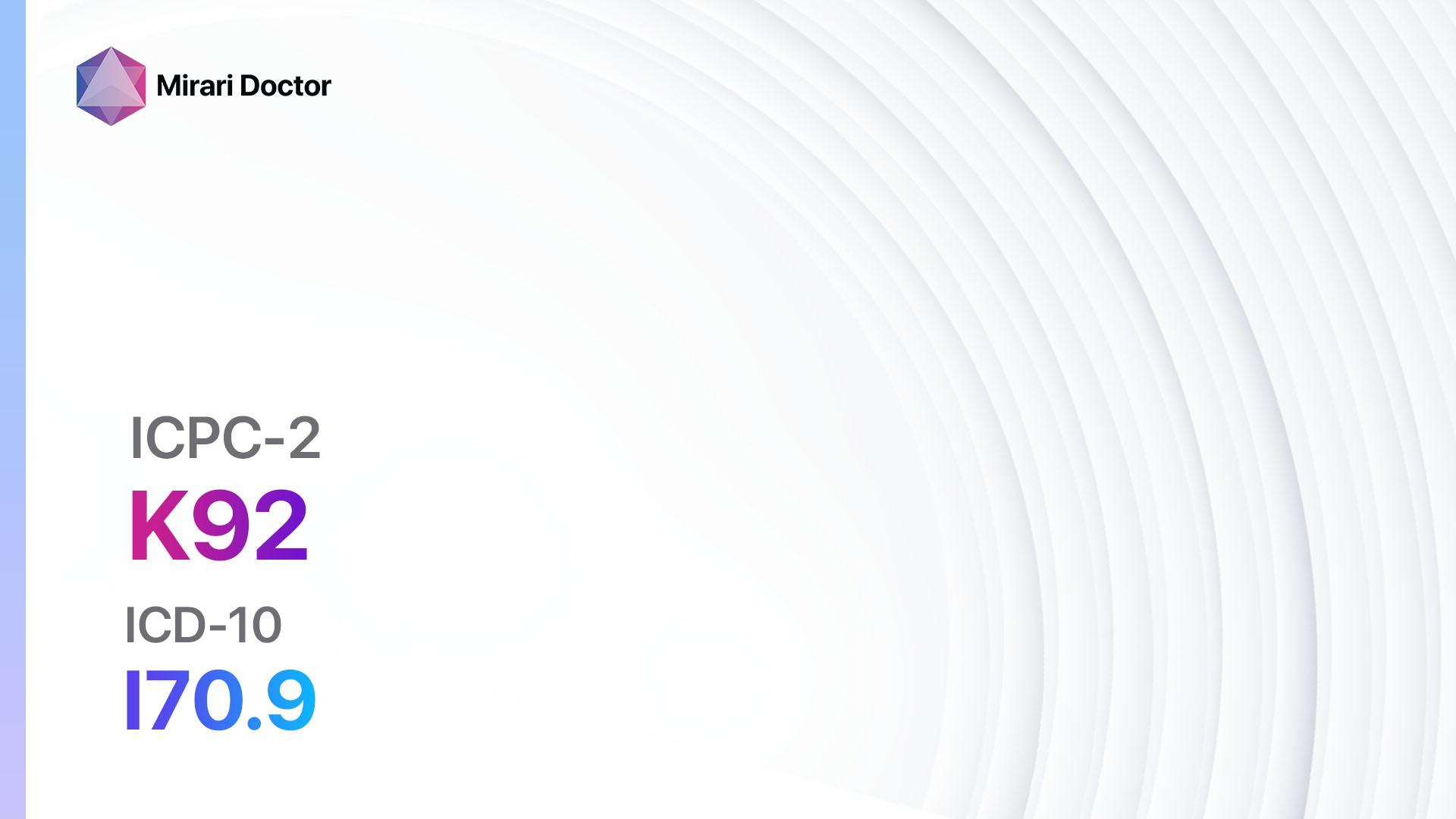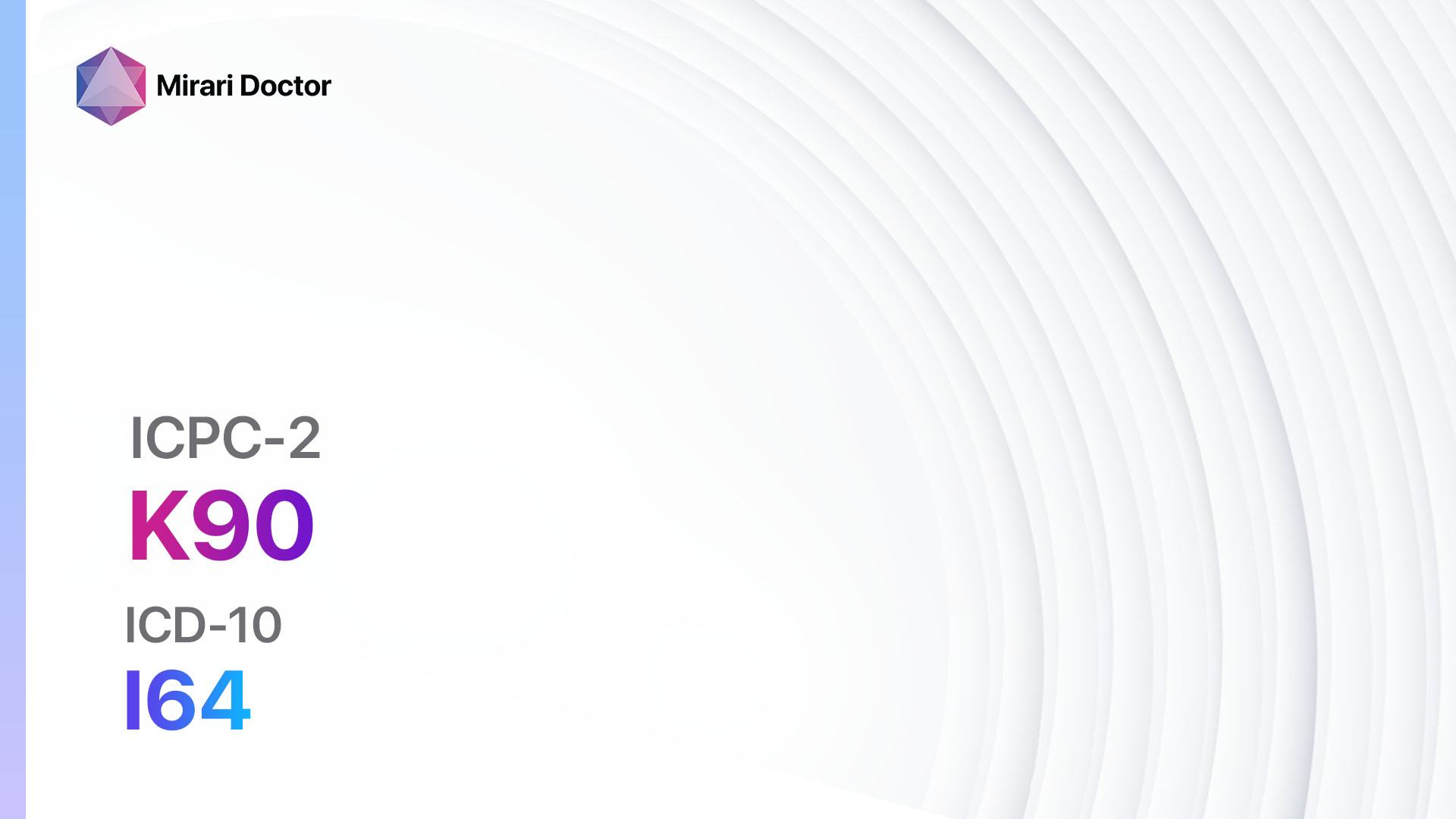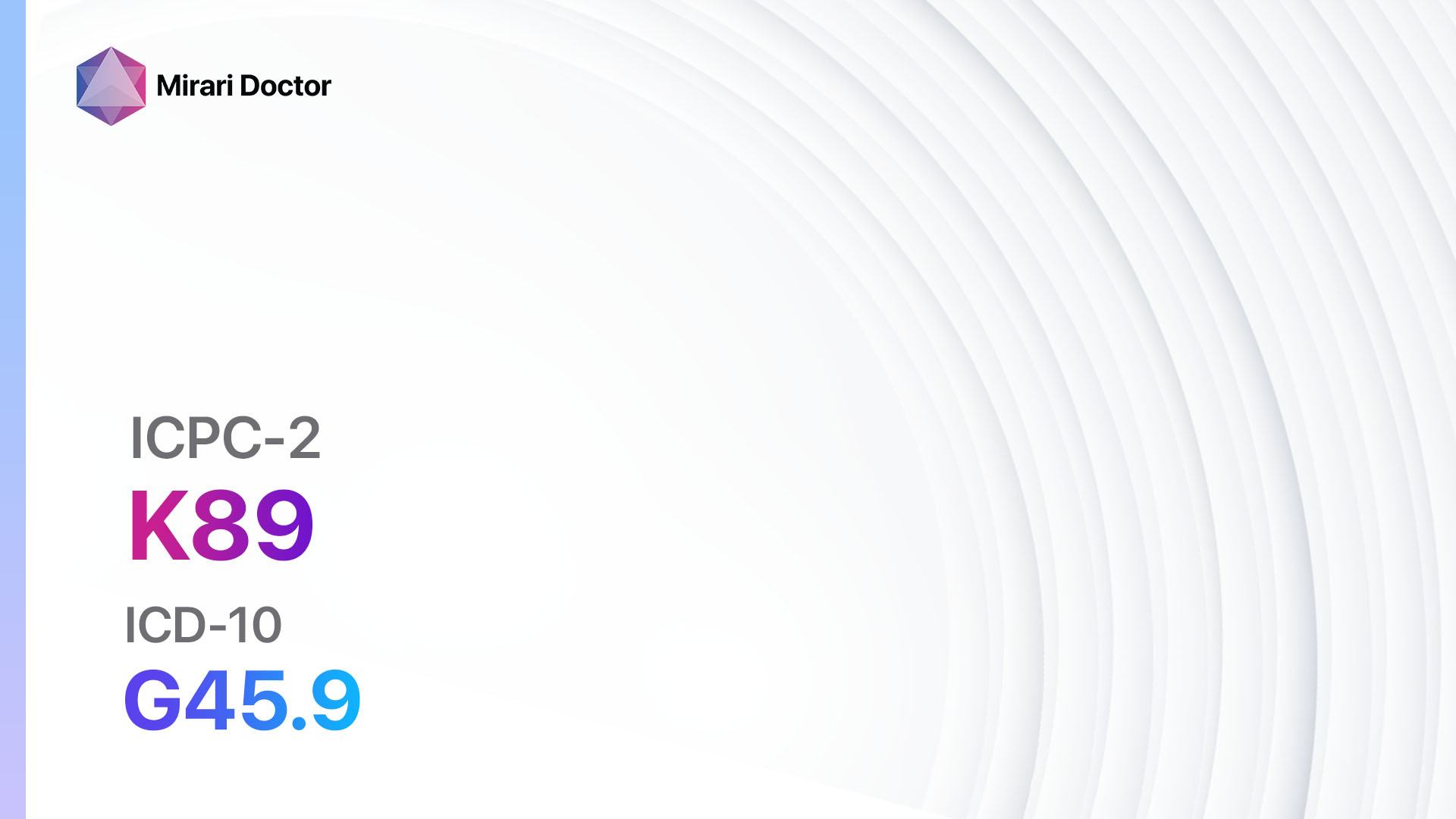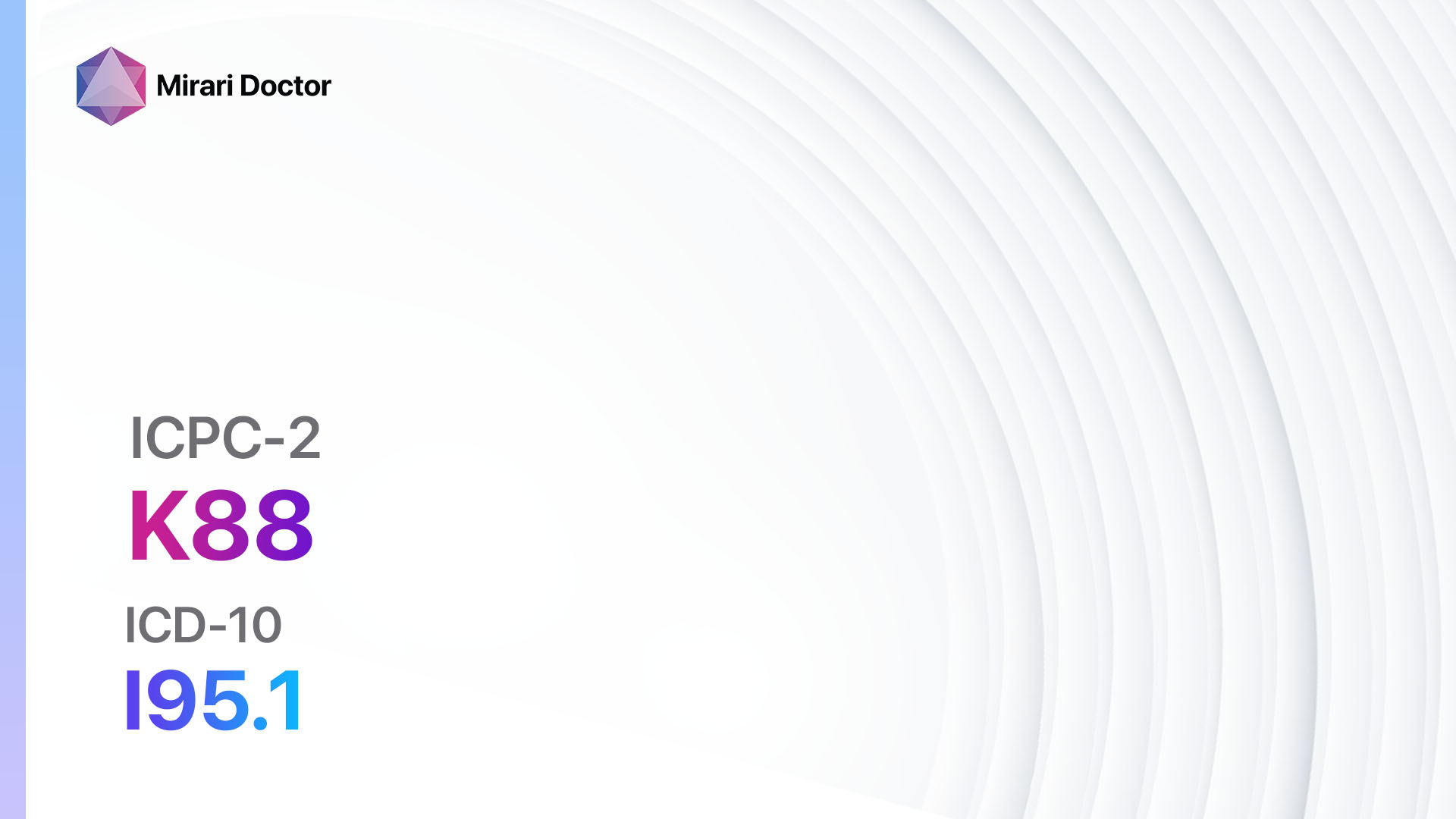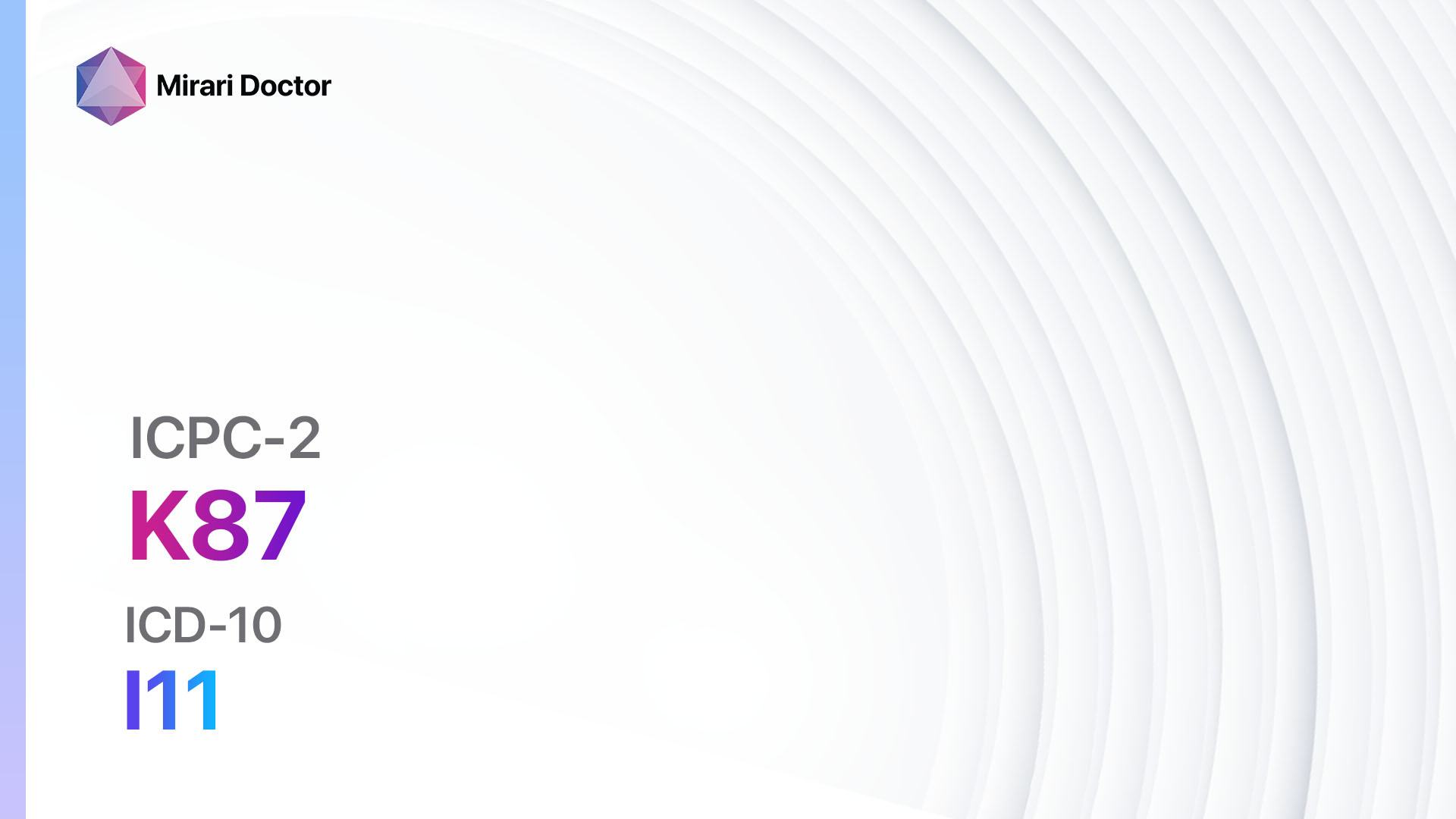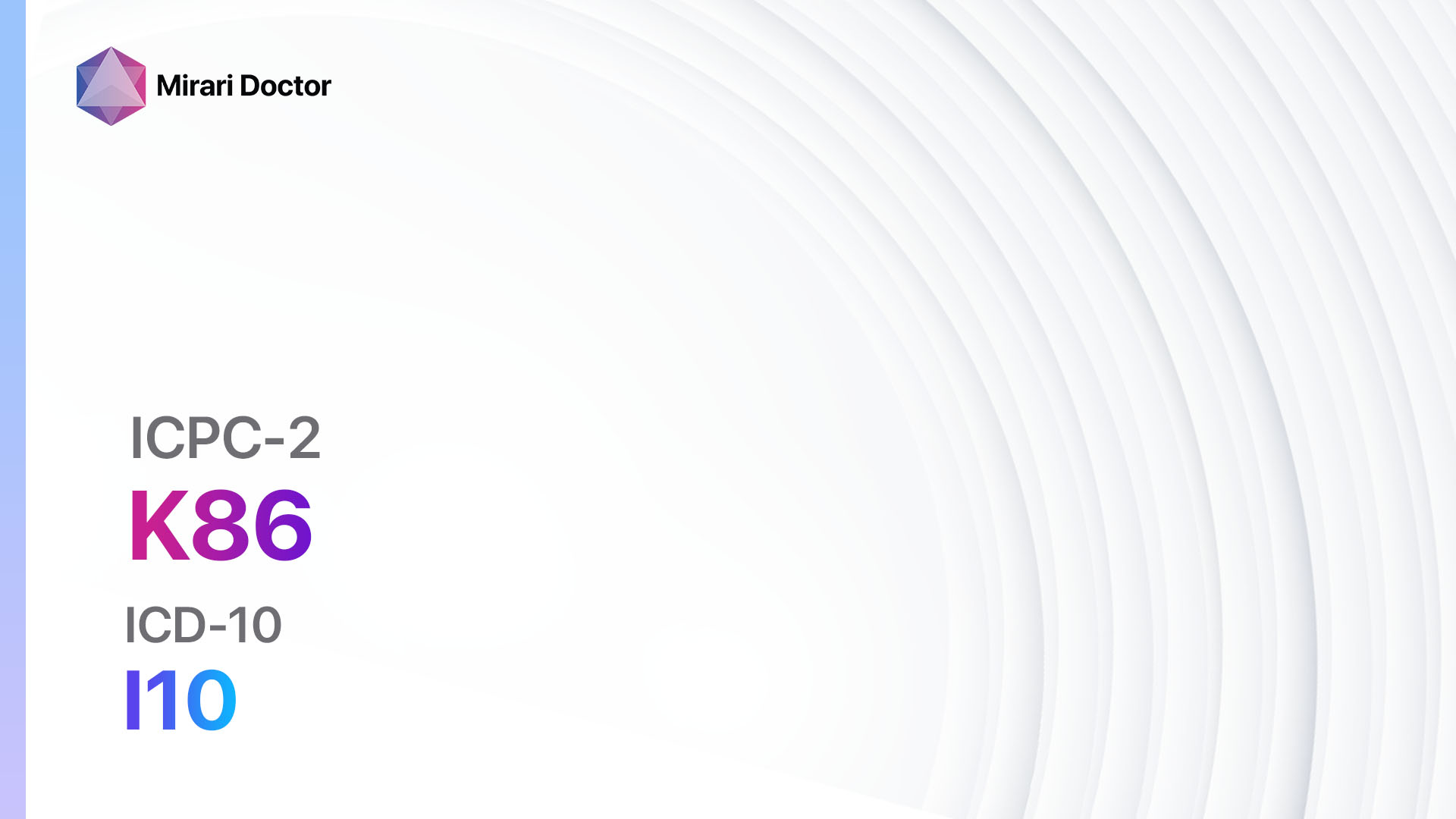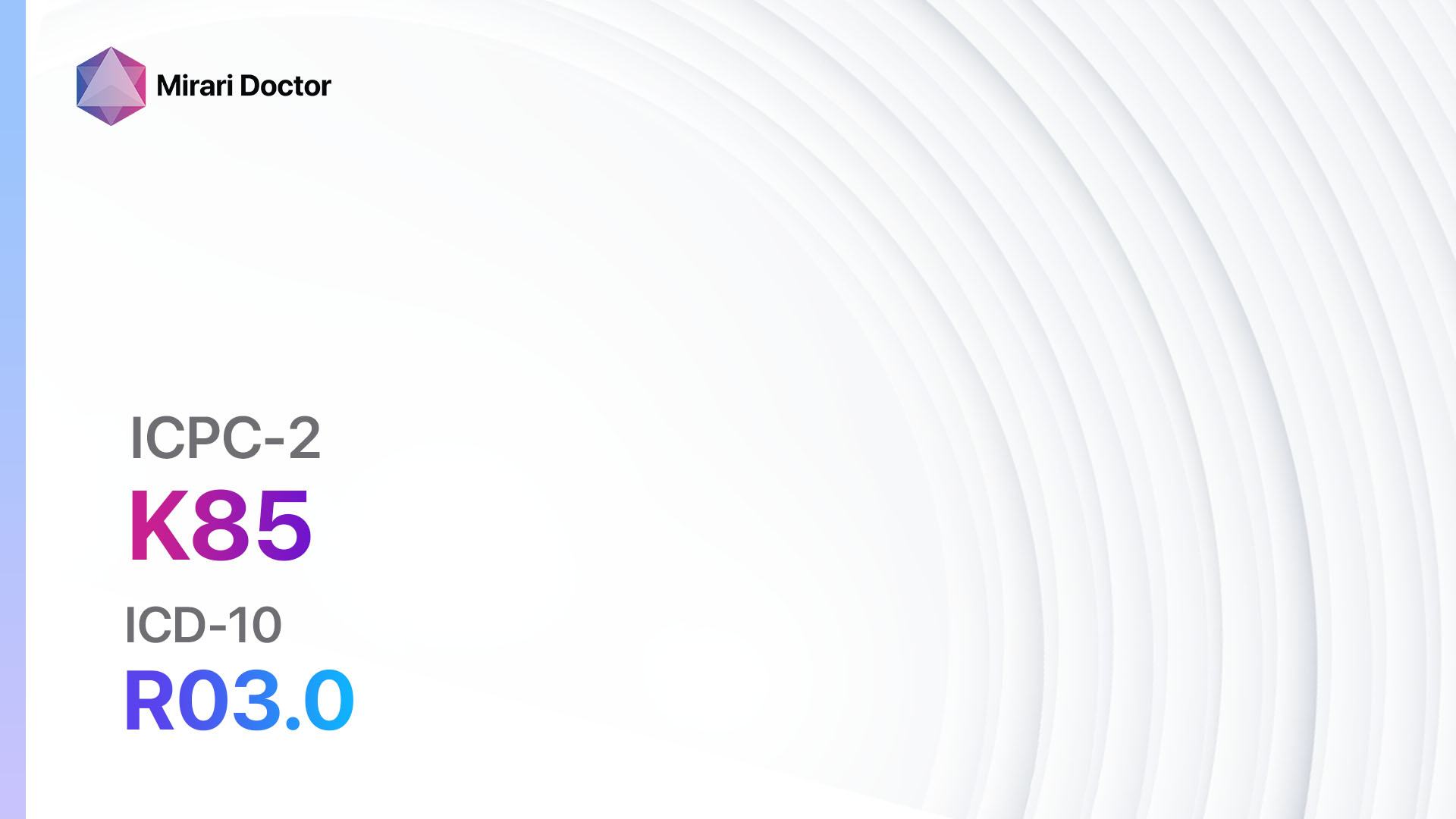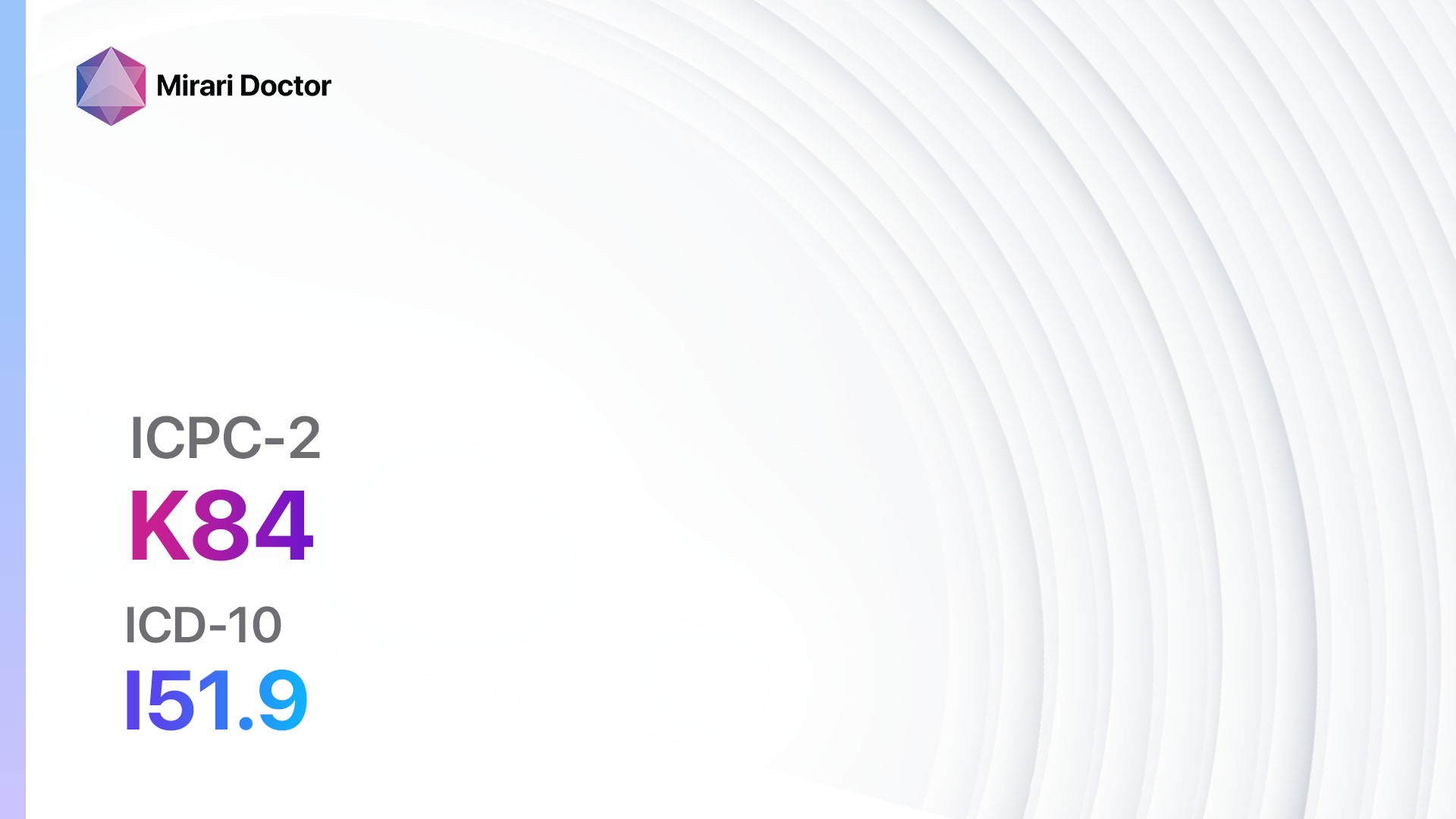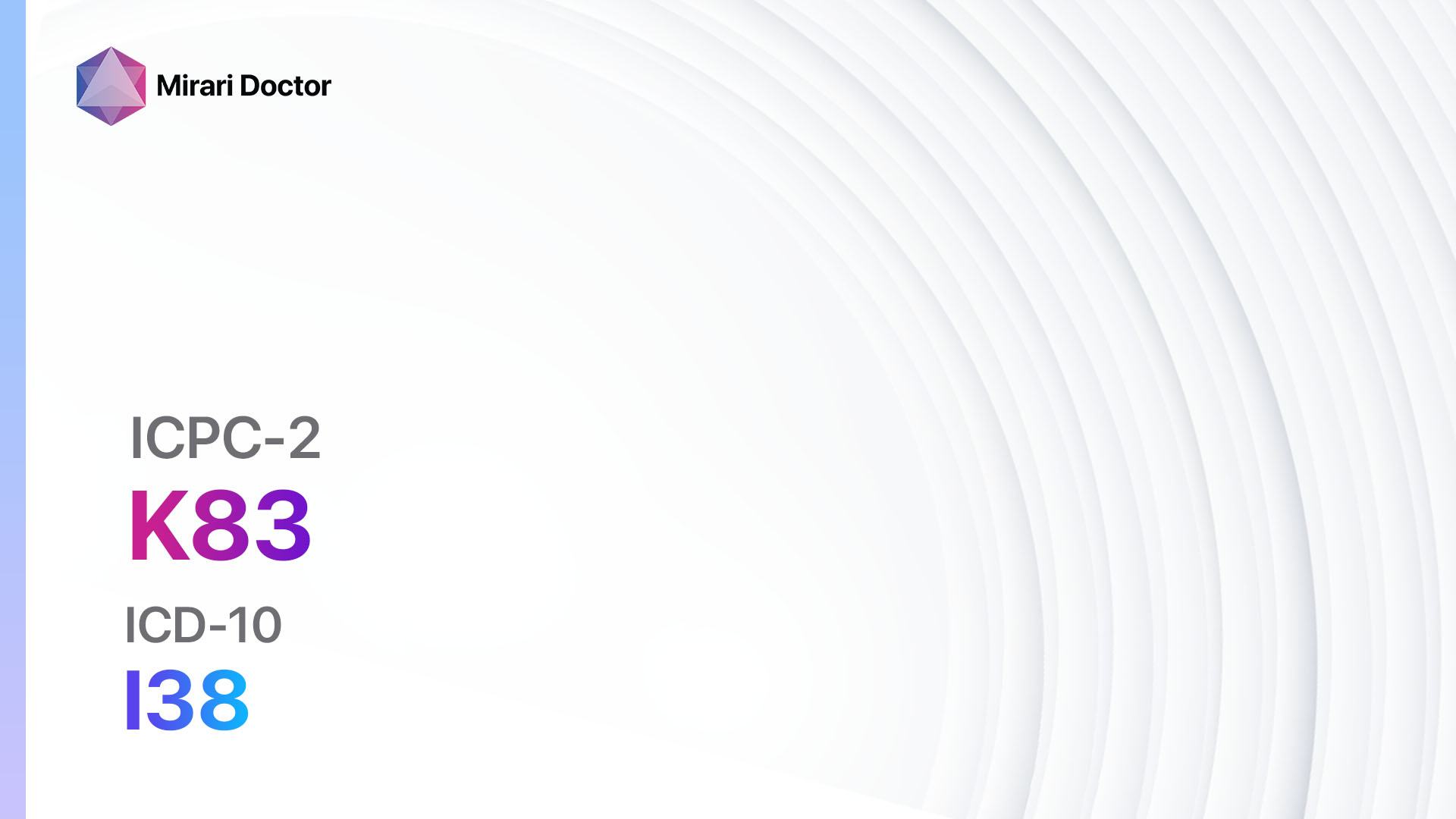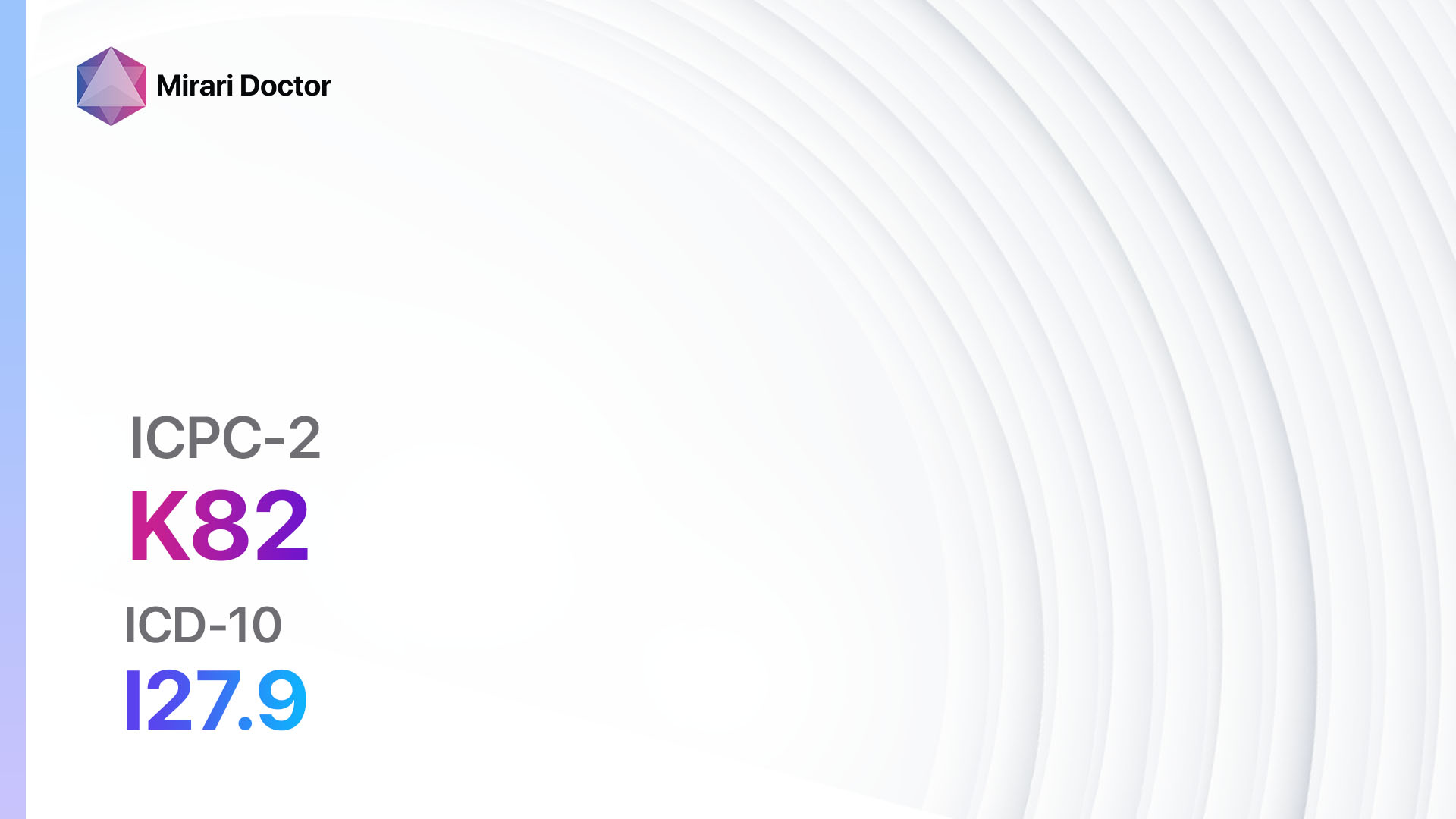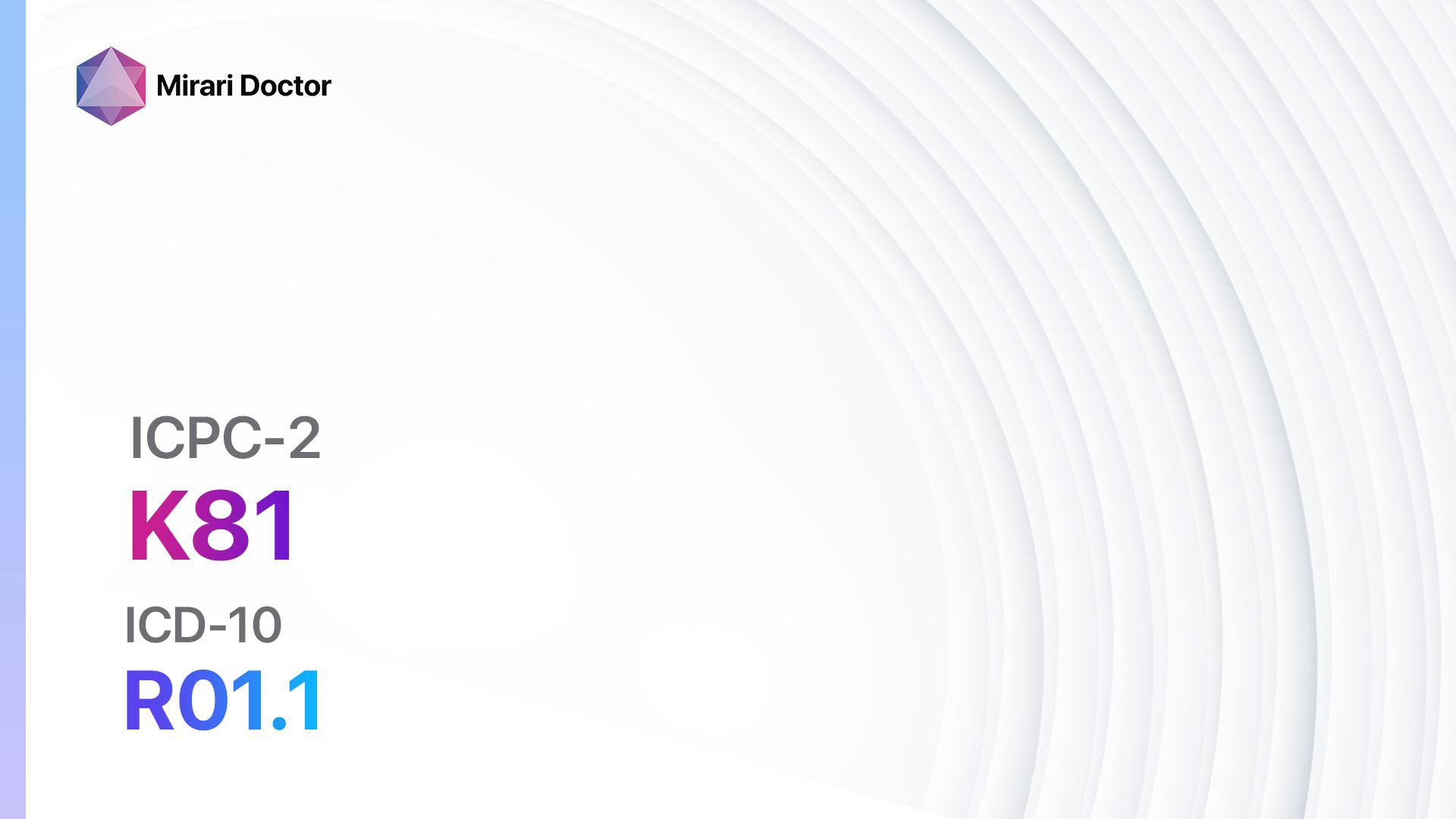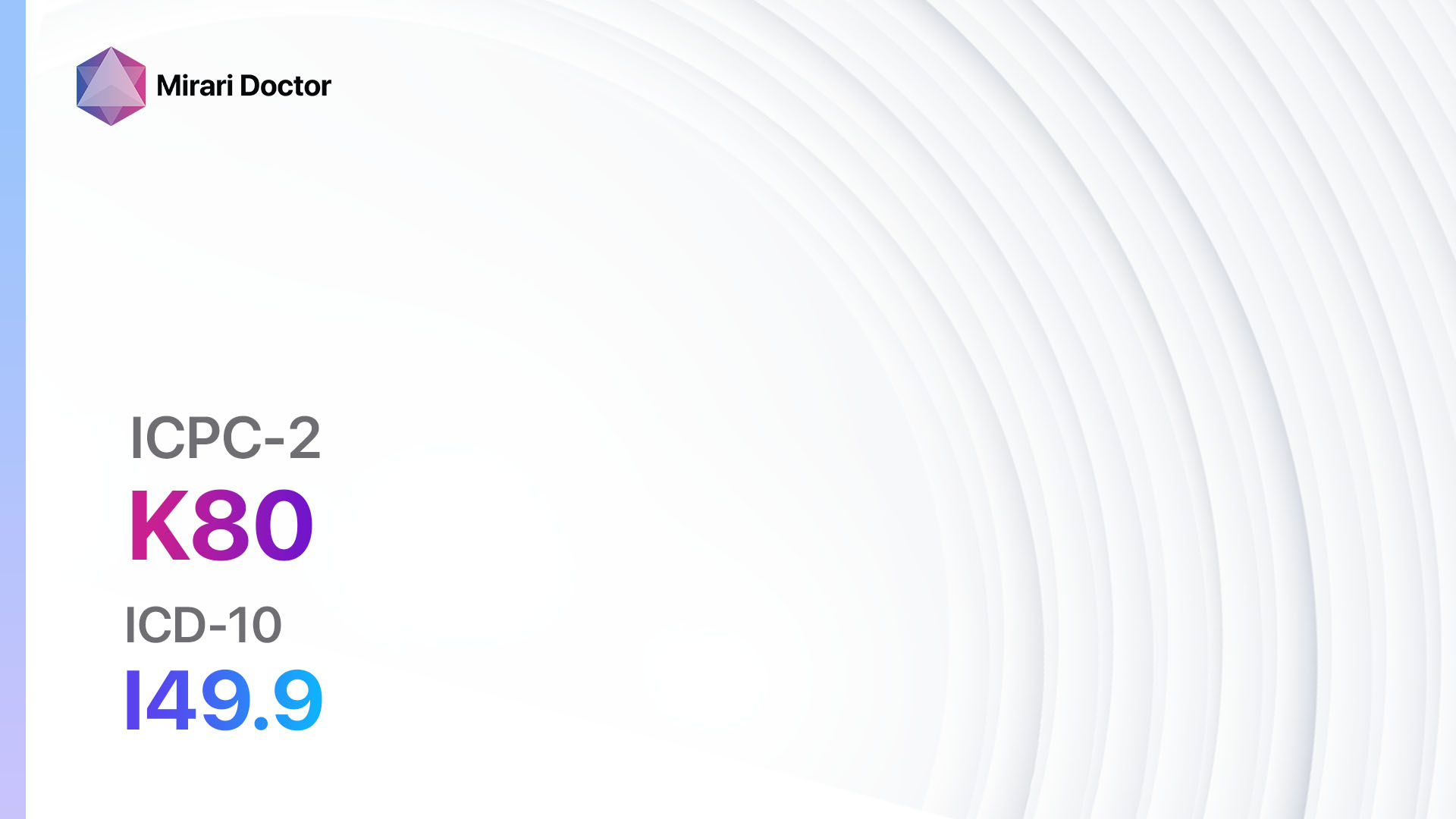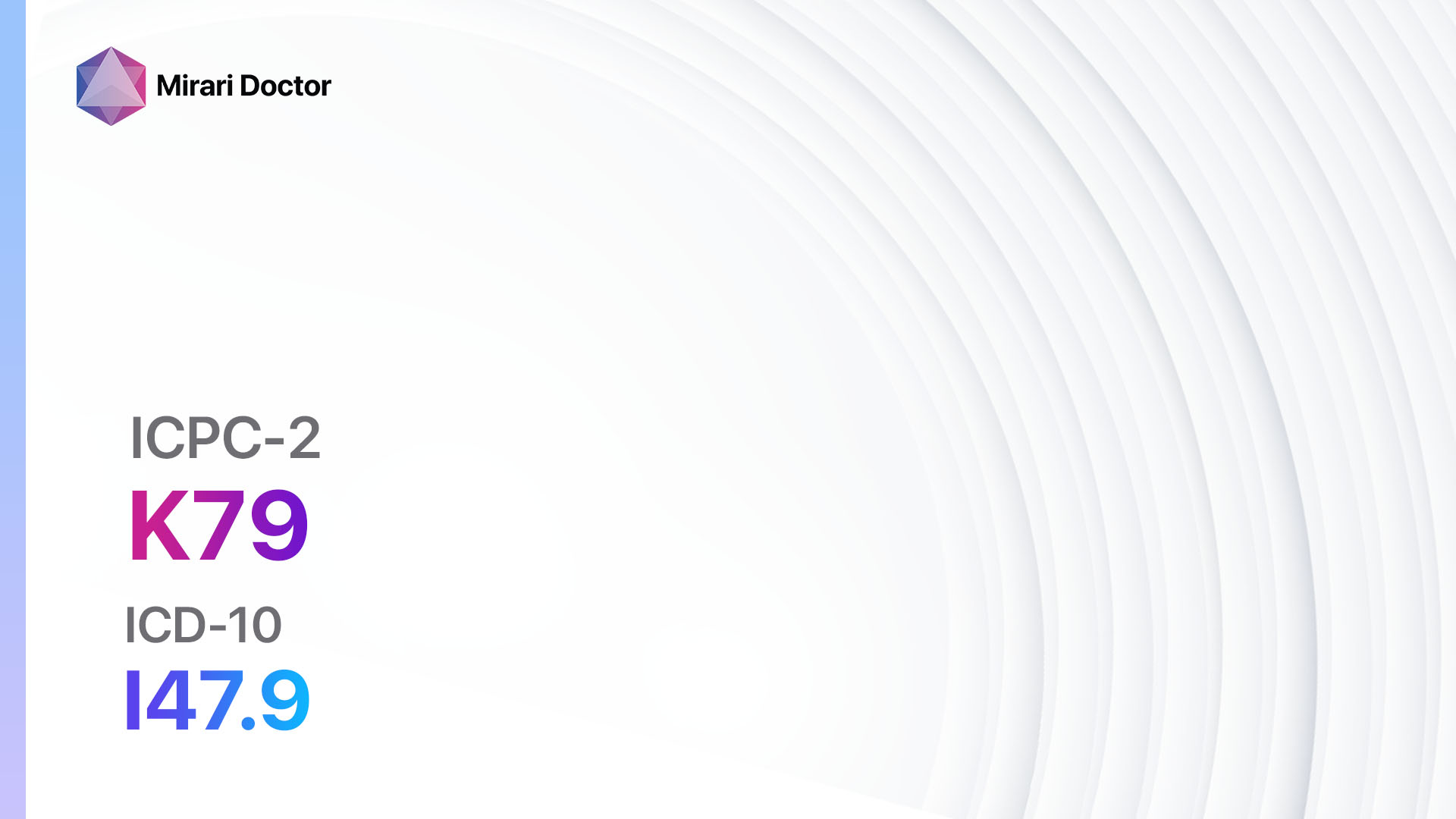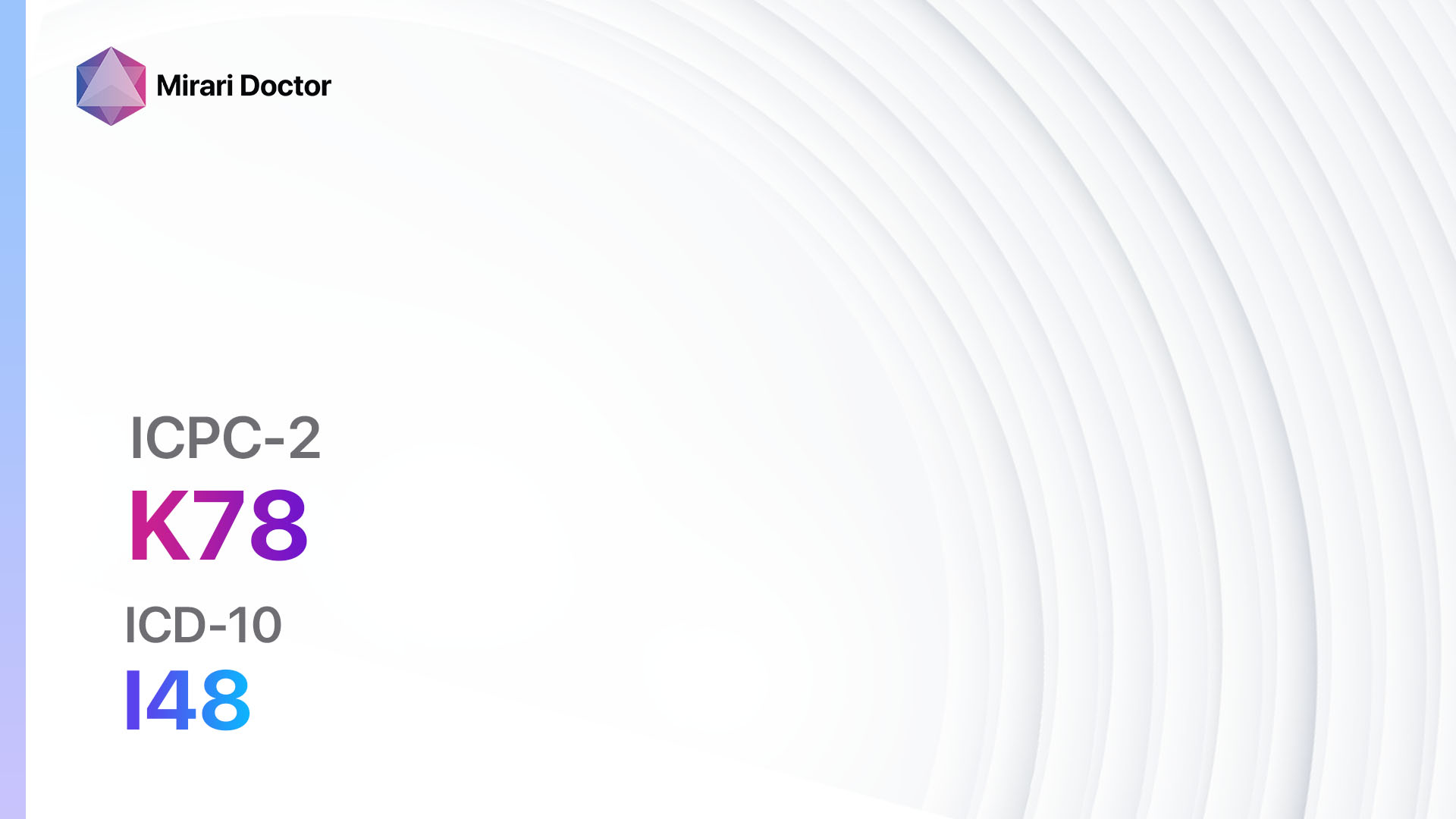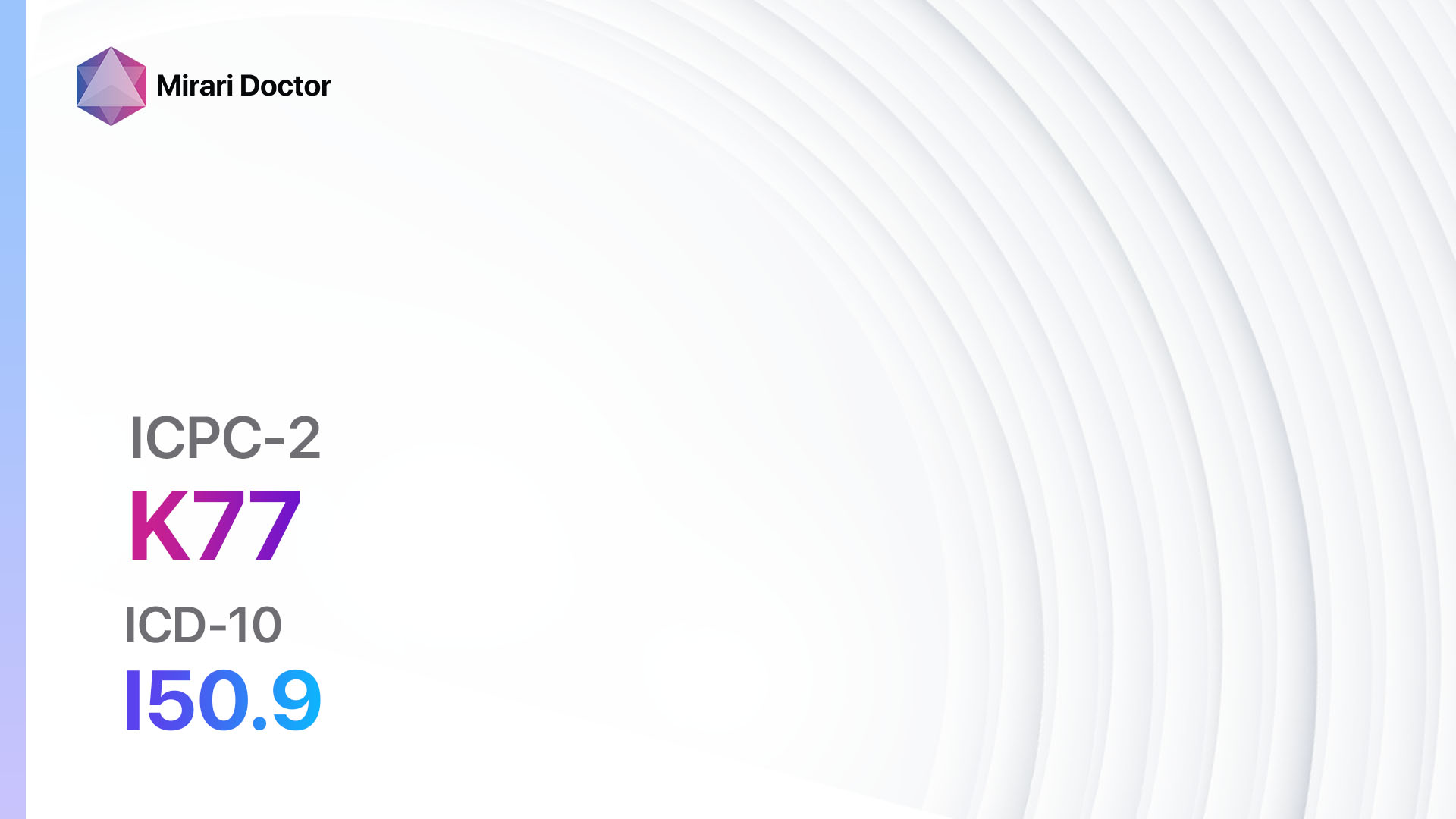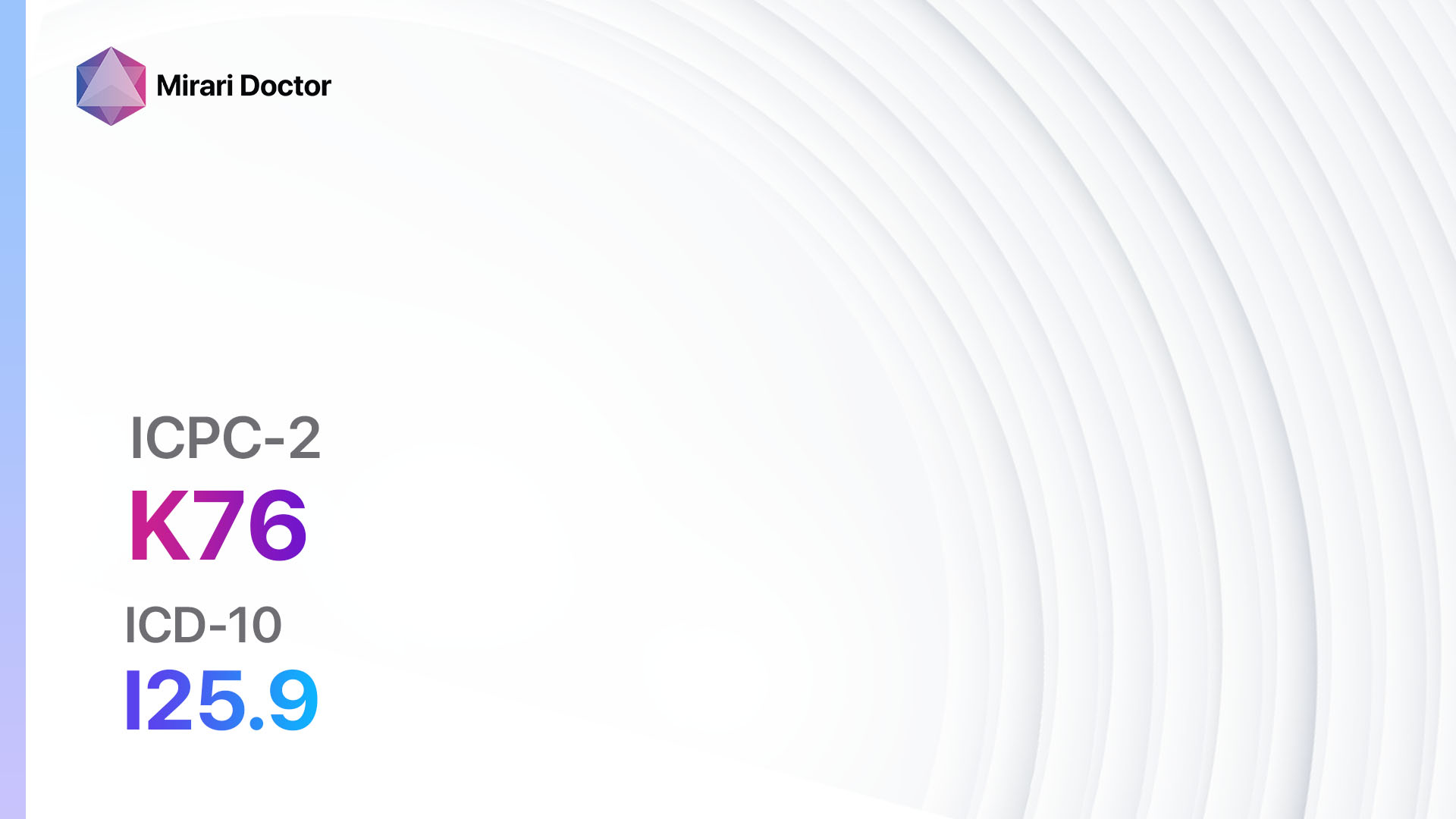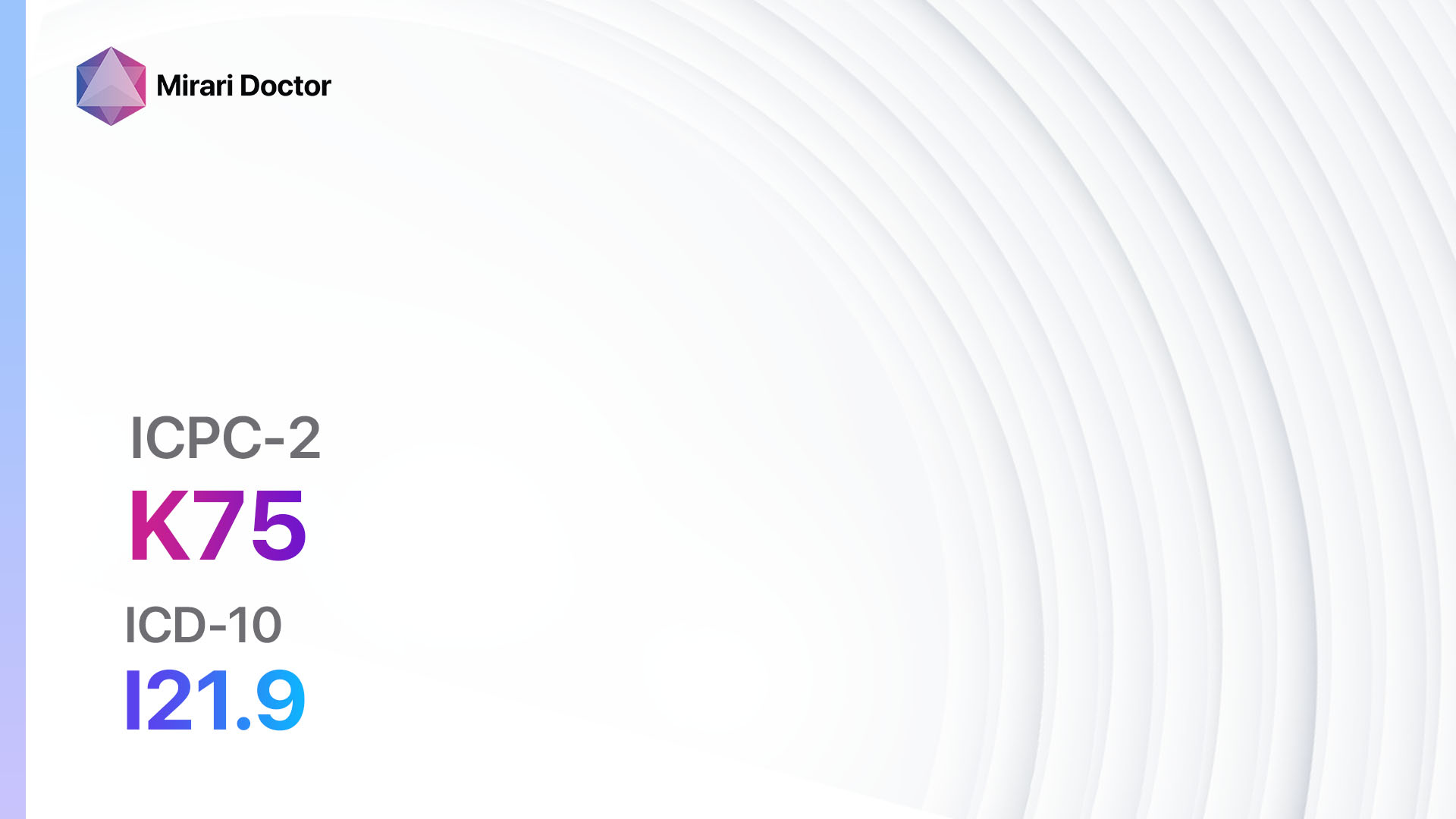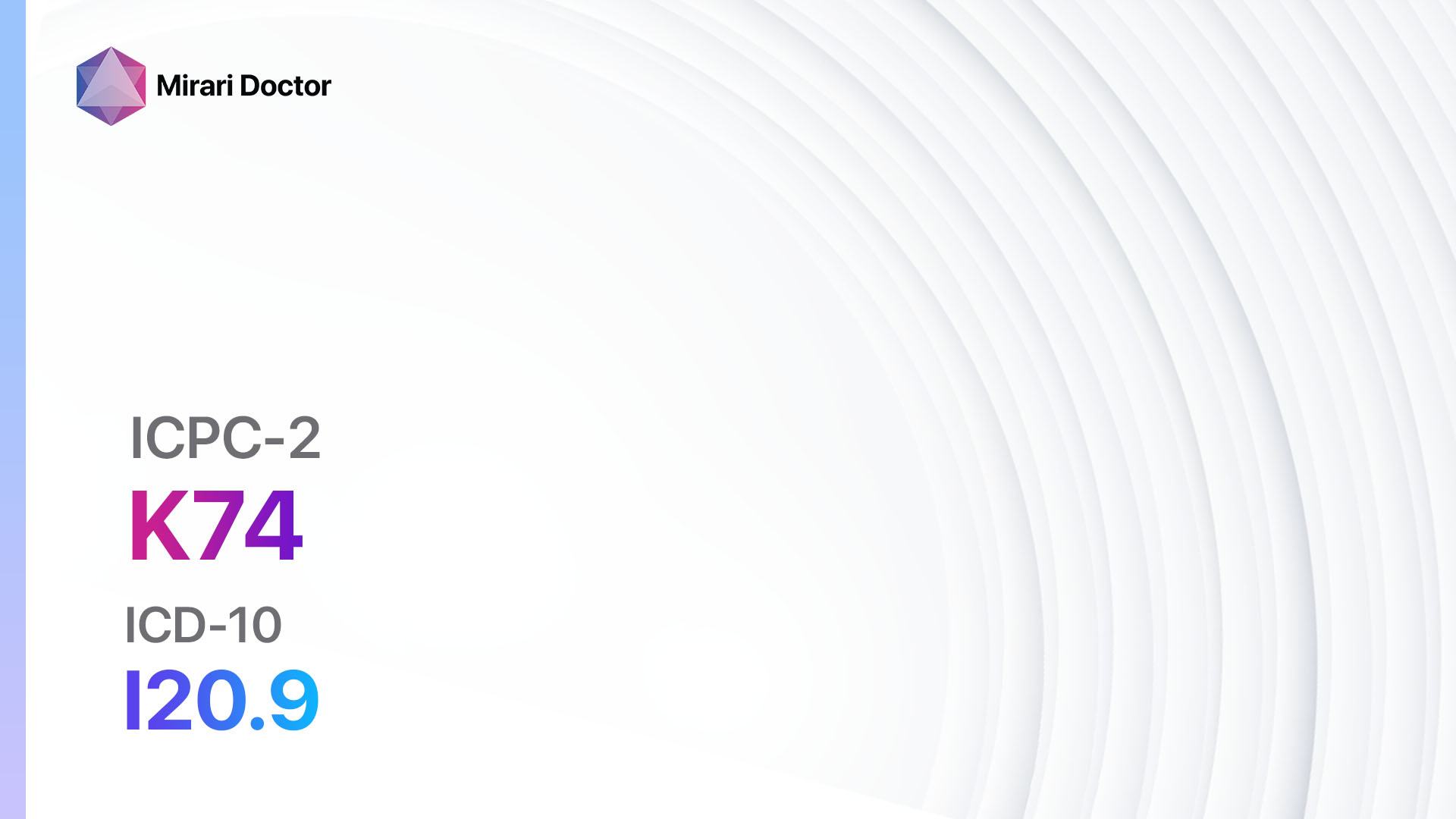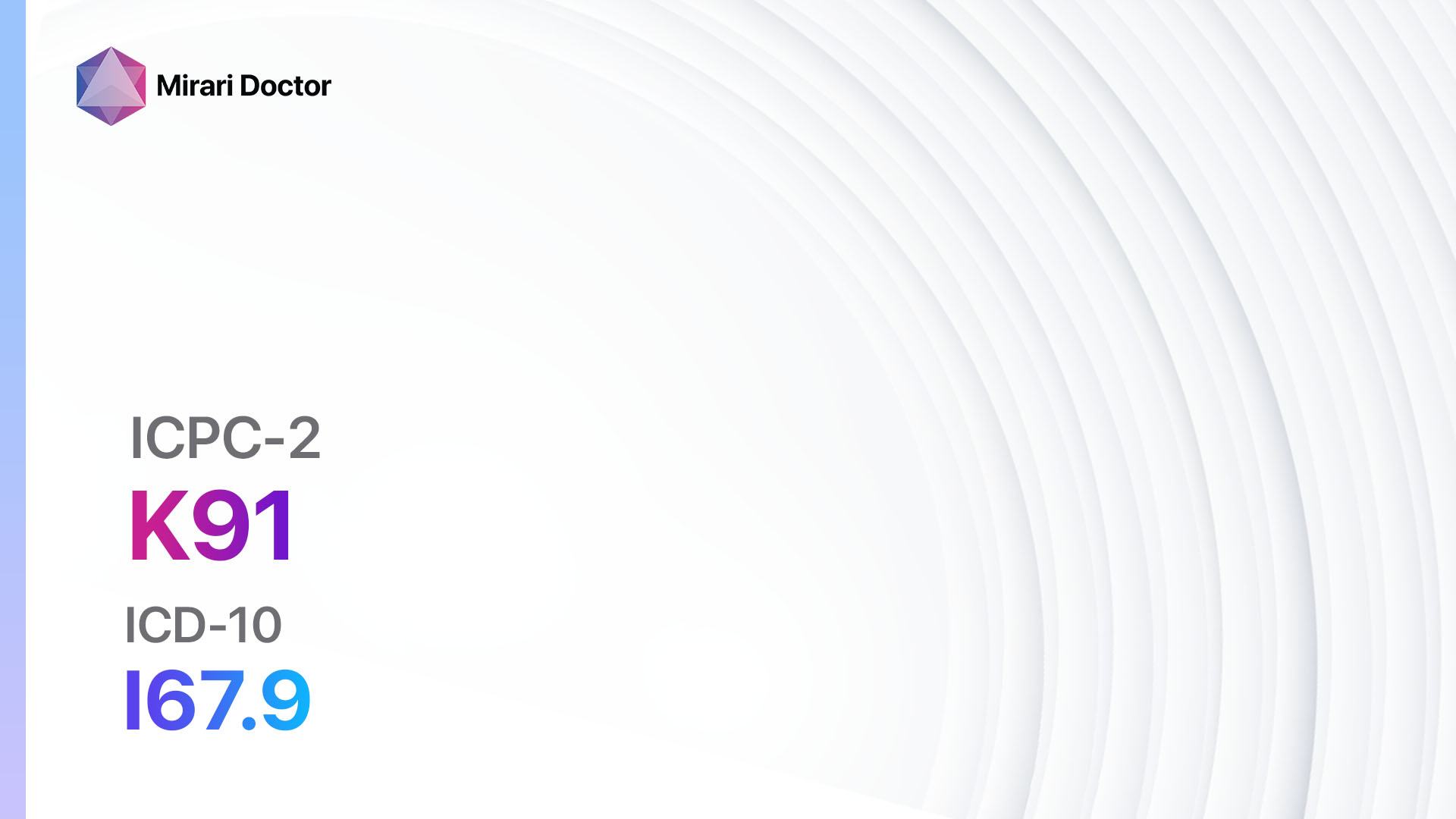
Introduction
Cerebrovascular disease refers to a group of conditions that affect the blood vessels supplying the brain. These conditions can lead to various complications, including stroke and transient ischemic attack (TIA)[1]. The aim of this guide is to provide healthcare professionals with a comprehensive overview of the diagnosis and management of cerebrovascular disease.
Codes
- ICPC-2 Code: K91 Cerebrovascular disease[2]
- ICD-10 Code: I67.9 Cerebrovascular disease, unspecified[3]
Symptoms
- Sudden severe headache
- Weakness or numbness on one side of the body
- Difficulty speaking or understanding speech
- Loss of vision in one or both eyes
- Dizziness or loss of balance
- Confusion or memory problems[4][5]
Symptoms may vary depending on the specific subtype of cerebrovascular disease and the affected blood vessels.
Causes
- Atherosclerosis: Build-up of plaque in the arteries supplying the brain
- Embolism: Blockage of blood vessels by a blood clot or other debris
- Hemorrhage: Bleeding into the brain due to a ruptured blood vessel
- Vasculitis: Inflammation of the blood vessels in the brain[6]
Diagnostic Steps
Medical History
- Gather information about the patient’s risk factors, such as hypertension, diabetes, smoking, and high cholesterol
- Assess the patient’s medical conditions, including previous strokes or TIAs
- Inquire about the presence of symptoms related to cerebrovascular disease[7]
Physical Examination
- Perform a thorough neurological examination to assess motor function, sensation, coordination, and reflexes
- Check blood pressure and heart rate to evaluate cardiovascular health
- Look for signs of carotid artery disease, such as bruits (abnormal sounds) over the carotid arteries[8]
Laboratory Tests
- Complete blood count (CBC) to assess for anemia or infection
- Lipid profile to evaluate cholesterol levels
- Blood glucose levels to screen for diabetes
- Coagulation studies to assess blood clotting function
- Inflammatory markers, such as C-reactive protein (CRP), to detect inflammation[9]
Diagnostic Imaging
- Computed tomography (CT) scan: Provides detailed images of the brain to detect bleeding or ischemic changes
- Magnetic resonance imaging (MRI): Offers more detailed images of the brain and blood vessels
- Doppler ultrasound: Assesses blood flow in the carotid and vertebral arteries
- Angiography: Invasive procedure that visualizes blood vessels using contrast dye[10]
Other Tests
- Electrocardiogram (ECG): Evaluates heart rhythm and detects any abnormalities
- Echocardiogram: Assesses the structure and function of the heart, looking for potential sources of emboli
- Transcranial Doppler (TCD): Measures blood flow velocity in the brain to assess for vasospasm or emboli
Follow-up and Patient Education
- Schedule regular follow-up appointments to monitor the patient’s condition and adjust treatment as needed
- Educate the patient about the importance of lifestyle modifications and adherence to medications
- Provide resources for support groups or counseling services for patients and their families
Possible Interventions
Traditional Interventions
Medications:
Top 5 drugs for Cerebrovascular disease:
- Antiplatelet agents (e.g., Aspirin, Clopidogrel):
- Cost: Aspirin is inexpensive (<$10/month). Clopidogrel is $10-$100/month for generic.
- Contraindications: Active bleeding, peptic ulcer disease.
- Side effects: Upset stomach, bleeding.
- Severe side effects: Severe bleeding, allergic reactions.
- Drug interactions: NSAIDs, other blood thinners.
- Warning: Risk of bleeding.
- Anticoagulants (e.g., Warfarin, Apixaban):
- Cost: Warfarin is inexpensive (<$10/month). Apixaban is $300-$400/month.
- Contraindications: Active bleeding, history of intracranial hemorrhage.
- Side effects: Bleeding, bruising.
- Severe side effects: Severe bleeding, allergic reactions.
- Drug interactions: Many drug interactions, including other anticoagulants and certain antibiotics.
- Warning: Regular monitoring of blood clotting function required for warfarin.
- Statins (e.g., Atorvastatin, Simvastatin):
- Cost: Generic versions can be $3-$50/month.
- Contraindications: Active liver disease, hypersensitivity.
- Side effects: Muscle pain, diarrhea, upset stomach.
- Severe side effects: Rhabdomyolysis, liver damage.
- Drug interactions: Grapefruit juice, other cholesterol-lowering agents.
- Warning: Regular liver function tests required.
- Angiotensin-converting enzyme (ACE) inhibitors (e.g., Lisinopril, Ramipril):
- Cost: Generics can be $10-$50/month.
- Contraindications: History of angioedema with ACE inhibitors, renal artery stenosis.
- Side effects: Cough, elevated blood urea nitrogen.
- Severe side effects: Angioedema, hyperkalemia.
- Drug interactions: Potassium supplements, NSAIDs.
- Warning: Monitoring of renal function and potassium is required.
- Calcium channel blockers (e.g., Amlodipine, Verapamil):
- Cost: Generic versions can be $10-$50/month.
- Contraindications: Severe hypotension, heart failure.
- Side effects: Swelling of the ankles, dizziness, flushing.
- Severe side effects: Heart block, low blood pressure.
- Drug interactions: Grapefruit juice, beta-blockers.
- Warning: Regular blood pressure monitoring required.
Alternative Drugs:
- Cilostazol: Used specifically for intermittent claudication in cerebrovascular disease. Cost: $30-$200/month.
- Nimodipine: Calcium channel blocker used for subarachnoid hemorrhage. Cost: $100-$200/month.
- Carbamazepine: Anticonvulsant used for trigeminal neuralgia. Cost: $10-$50/month.
- Methylprednisolone: Corticosteroid used for acute spinal cord injury. Cost: $10-$50/month.
- Alteplase: Thrombolytic agent used for acute ischemic stroke. Cost: $2,000-$3,000 per dose.
Surgical Procedures:
- Carotid endarterectomy: Surgical removal of plaque from the carotid artery. Cost: $15,000 to $50,000.
- Carotid artery stenting: Placement of a stent to open up a narrowed carotid artery. Cost: $15,000 to $50,000.
- Cerebral aneurysm clipping: Surgical clipping of a cerebral aneurysm to prevent rupture. Cost: $50,000 to $100,000.
- Intracranial bypass surgery: Surgical creation of a bypass to restore blood flow to the brain. Cost: $50,000 to $100,000.
- Endovascular coiling: Minimally invasive procedure to treat cerebral aneurysms. Cost: $20,000 to $40,000.
Alternative Interventions
- Acupuncture: May help improve blood flow and reduce pain. Cost: $60-$120 per session.
- Chelation therapy: Controversial treatment involving the administration of chelating agents to remove heavy metals from the body. Cost: $75-$150 per session.
- Hyperbaric oxygen therapy: Involves breathing pure oxygen in a pressurized chamber to increase oxygen delivery to tissues. Cost: $200-$300 per session.
- Herbal supplements: Some herbs, such as garlic and ginkgo biloba, may have potential benefits for improving circulation. Cost: Varies depending on the specific supplement.
Lifestyle Interventions
- Dietary modifications: Encourage a diet low in saturated fats, cholesterol, and sodium, and high in fruits, vegetables, and whole grains. Cost: Varies depending on food choices.
- Regular exercise: Recommend at least 150 minutes of moderate-intensity aerobic activity per week. Cost: Varies depending on the chosen exercise.
- Smoking cessation: Advise patients to quit smoking to reduce the risk of further vascular damage. Cost: Varies depending on the chosen smoking cessation method.
- Stress management: Encourage stress-reducing techniques, such as meditation, yoga, or counseling. Cost: Varies depending on the chosen method.
- Weight management: Promote weight loss for overweight or obese patients to reduce the burden on the cardiovascular system. Cost: Varies depending on the chosen weight loss program.
It is important to note that the cost ranges provided are approximate and may vary depending on the location and availability of the interventions.
Mirari Cold Plasma Alternative Intervention
Understanding Mirari Cold Plasma
- Safe and Non-Invasive Treatment: Mirari Cold Plasma is a safe and non-invasive treatment option for various skin conditions. It does not require incisions, minimizing the risk of scarring, bleeding, or tissue damage.
- Efficient Extraction of Foreign Bodies: Mirari Cold Plasma facilitates the removal of foreign bodies from the skin by degrading and dissociating organic matter, allowing easier access and extraction.
- Pain Reduction and Comfort: Mirari Cold Plasma has a local analgesic effect, providing pain relief during the treatment, making it more comfortable for the patient.
- Reduced Risk of Infection: Mirari Cold Plasma has antimicrobial properties, effectively killing bacteria and reducing the risk of infection.
- Accelerated Healing and Minimal Scarring: Mirari Cold Plasma stimulates wound healing and tissue regeneration, reducing healing time and minimizing the formation of scars.
Mirari Cold Plasma Prescription
Video instructions for using Mirari Cold Plasma Device – K91 Cerebrovascular disease (ICD-10:I67.9)
| Mild | Moderate | Severe |
| Mode setting: 1 (Infection) Location: 5 (Lungs) Morning: 15 minutes, Evening: 15 minutes |
Mode setting: 1 (Infection) Location: 5 (Lungs) Morning: 30 minutes, Lunch: 30 minutes, Evening: 30 minutes |
Mode setting: 1 (Infection) Location: 5 (Lungs) Morning: 30 minutes, Lunch: 30 minutes, Evening: 30 minutes |
| Mode setting: 2 (Wound Healing) Location: 5 (Lungs) Morning: 15 minutes, Evening: 15 minutes |
Mode setting: 2 (Wound Healing) Location: 5 (Lungs) Morning: 30 minutes, Lunch: 30 minutes, Evening: 30 minutes |
Mode setting: 2 (Wound Healing) Location: 5 (Lungs) Morning: 30 minutes, Lunch: 30 minutes, Evening: 30 minutes |
| Mode setting: 7 (Immunotherapy) Location: 1 (Sacrum) Morning: 15 minutes, Evening: 15 minutes |
Mode setting: 7 (Immunotherapy) Location: 1 (Sacrum) Morning: 30 minutes, Lunch: 30 minutes, Evening: 30 minutes |
Mode setting: 7 (Immunotherapy) Location: 1 (Sacrum) Morning: 30 minutes, Lunch: 30 minutes, Evening: 30 minutes |
| Mode setting: 7 (Immunotherapy) Location: 4 (Heart, Bile & Pancreas) Morning: 15 minutes, Evening: 15 minutes |
Mode setting: 7 (Immunotherapy) Location: 4 (Heart, Bile & Pancreas) Morning: 30 minutes, Lunch: 30 minutes, Evening: 30 minutes |
Mode setting:7 (Immunotherapy) Location: 4 (Heart, Bile & Pancreas) Morning: 30 minutes, Lunch: 30 minutes, Evening: 30 minutes |
| Total Morning: 60 minutes approx. $10 USD, Evening: 60 minutes approx. $10 USD |
Total Morning: 120 minutes approx. $20 USD, Lunch: 120 minutes approx. $20 USD, Evening: 120 minutes approx. $20 USD, |
Total Morning: 120 minutes approx. $20 USD, Lunch: 120 minutes approx. $20 USD, Evening: 120 minutes approx. $20 USD, |
| Usual treatment for 7-60 days approx. $140 USD – $1200 USD | Usual treatment for 6-8 weeks approx. $2,520 USD – $3,360 USD |
Usual treatment for 3-6 months approx. $5,400 USD – $10,800 USD
|
 |
|
Use the Mirari Cold Plasma device to treat Cerebrovascular disease effectively.
WARNING: MIRARI COLD PLASMA IS DESIGNED FOR THE HUMAN BODY WITHOUT ANY ARTIFICIAL OR THIRD PARTY PRODUCTS. USE OF OTHER PRODUCTS IN COMBINATION WITH MIRARI COLD PLASMA MAY CAUSE UNPREDICTABLE EFFECTS, HARM OR INJURY. PLEASE CONSULT A MEDICAL PROFESSIONAL BEFORE COMBINING ANY OTHER PRODUCTS WITH USE OF MIRARI.
Step 1: Cleanse the Skin
- Start by cleaning the affected area of the skin with a gentle cleanser or mild soap and water. Gently pat the area dry with a clean towel.
Step 2: Prepare the Mirari Cold Plasma device
- Ensure that the Mirari Cold Plasma device is fully charged or has fresh batteries as per the manufacturer’s instructions. Make sure the device is clean and in good working condition.
- Switch on the Mirari device using the power button or by following the specific instructions provided with the device.
- Some Mirari devices may have adjustable settings for intensity or treatment duration. Follow the manufacturer’s instructions to select the appropriate settings based on your needs and the recommended guidelines.
Step 3: Apply the Device
- Place the Mirari device in direct contact with the affected area of the skin. Gently glide or hold the device over the skin surface, ensuring even coverage of the area experiencing.
- Slowly move the Mirari device in a circular motion or follow a specific pattern as indicated in the user manual. This helps ensure thorough treatment coverage.
Step 4: Monitor and Assess:
- Keep track of your progress and evaluate the effectiveness of the Mirari device in managing your Cerebrovascular disease. If you have any concerns or notice any adverse reactions, consult with your health care professional.
Note
This guide is for informational purposes only and should not replace the advice of a medical professional. Always consult with your healthcare provider or a qualified medical professional for personal advice, diagnosis, or treatment. Do not solely rely on the information presented here for decisions about your health. Use of this information is at your own risk. The authors of this guide, nor any associated entities or platforms, are not responsible for any potential adverse effects or outcomes based on the content.
Mirari Cold Plasma System Disclaimer
- Purpose: The Mirari Cold Plasma System is a Class 2 medical device designed for use by trained healthcare professionals. It is registered for use in Thailand and Vietnam. It is not intended for use outside of these locations.
- Informational Use: The content and information provided with the device are for educational and informational purposes only. They are not a substitute for professional medical advice or care.
- Variable Outcomes: While the device is approved for specific uses, individual outcomes can differ. We do not assert or guarantee specific medical outcomes.
- Consultation: Prior to utilizing the device or making decisions based on its content, it is essential to consult with a Certified Mirari Tele-Therapist and your medical healthcare provider regarding specific protocols.
- Liability: By using this device, users are acknowledging and accepting all potential risks. Neither the manufacturer nor the distributor will be held accountable for any adverse reactions, injuries, or damages stemming from its use.
- Geographical Availability: This device has received approval for designated purposes by the Thai and Vietnam FDA. As of now, outside of Thailand and Vietnam, the Mirari Cold Plasma System is not available for purchase or use.
References
- Sacco, R. L., Kasner, S. E., Broderick, J. P., Caplan, L. R., Connors, J. J., Culebras, A., … & Vinters, H. V. (2013). An updated definition of stroke for the 21st century: a statement for healthcare professionals from the American Heart Association/American Stroke Association. Stroke, 44(7), 2064-2089.
- WONCA International Classification Committee. (1998). ICPC-2: International classification of primary care. Oxford University Press, USA.
- World Health Organization. (2019). International statistical classification of diseases and related health problems (11th ed.).
- Hankey, G. J. (2017). Stroke. The Lancet, 389(10069), 641-654.
- Boehme, A. K., Esenwa, C., & Elkind, M. S. (2017). Stroke risk factors, genetics, and prevention. Circulation research, 120(3), 472-495.
- Grysiewicz, R. A., Thomas, K., & Pandey, D. K. (2008). Epidemiology of ischemic and hemorrhagic stroke: incidence, prevalence, mortality, and risk factors. Neurologic clinics, 26(4), 871-895.
- Powers, W. J., Rabinstein, A. A., Ackerson, T., Adeoye, O. M., Bambakidis, N. C., Becker, K., … & Tirschwell, D. L. (2019). Guidelines for the early management of patients with acute ischemic stroke: 2019 update to the 2018 guidelines for the early management of acute ischemic stroke: a guideline for healthcare professionals from the American Heart Association/American Stroke Association. Stroke, 50(12), e344-e418.
- Meschia, J. F., Bushnell, C., Boden-Albala, B., Braun, L. T., Bravata, D. M., Chaturvedi, S., … & Wilson, J. A. (2014). Guidelines for the primary prevention of stroke: a statement for healthcare professionals from the American Heart Association/American Stroke Association. Stroke, 45(12), 3754-3832.
- Kernan, W. N., Ovbiagele, B., Black, H. R., Bravata, D. M., Chimowitz, M. I., Ezekowitz, M. D., … & Wilson, J. A. (2014). Guidelines for the prevention of stroke in patients with stroke and transient ischemic attack: a guideline for healthcare professionals from the American Heart Association/American Stroke Association. Stroke, 45(7), 2160-2236.
- Salmela, M. B., Mortazavi, S., Jagadeesan, B. D., Broderick, D. F., Burns, J., Deshmukh, T. K., … & Corey, A. S. (2017). ACR appropriateness criteria® cerebrovascular disease. Journal of the American College of Radiology, 14(5), S34-S61.
Related articles
Made in USA


